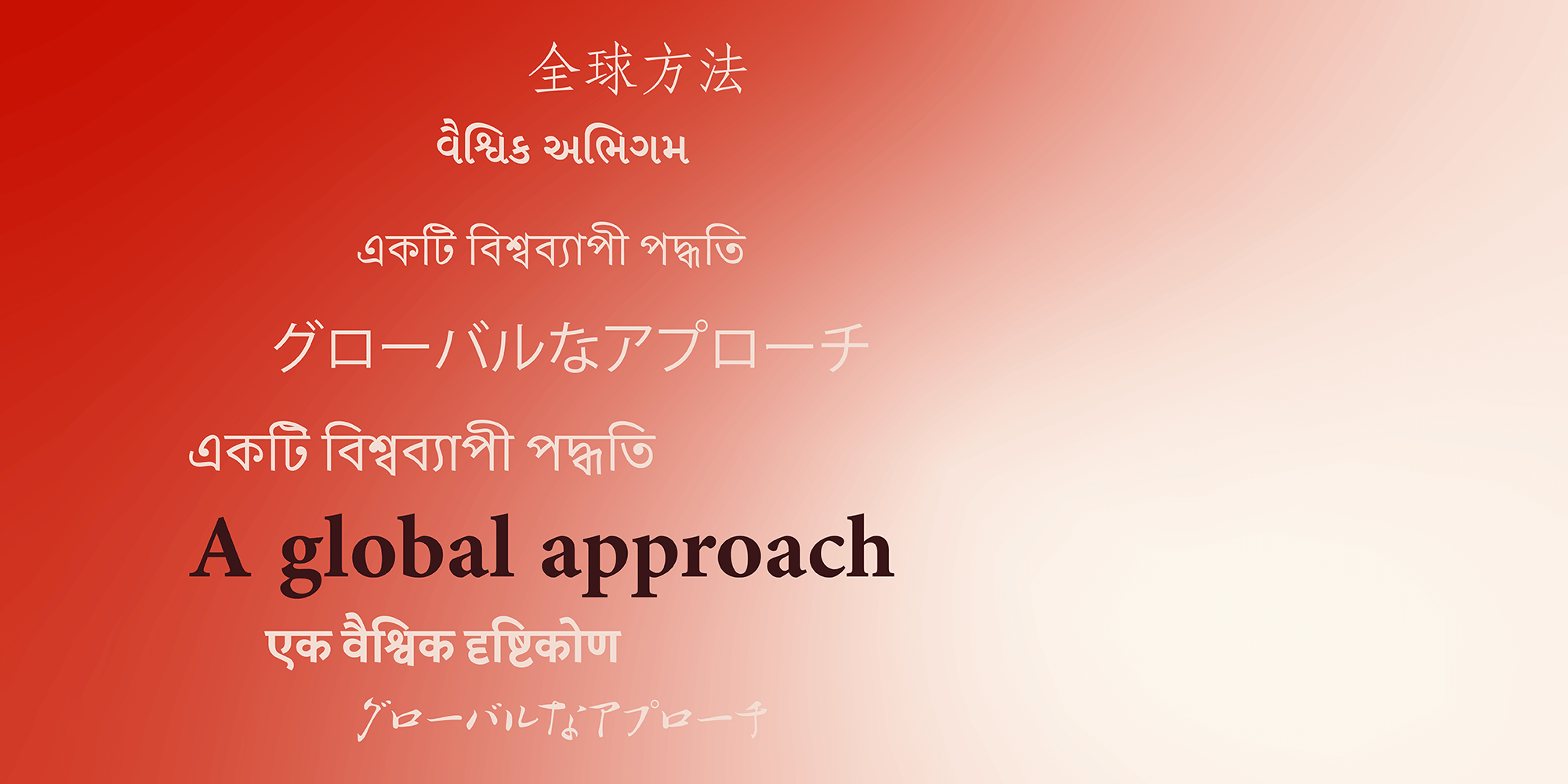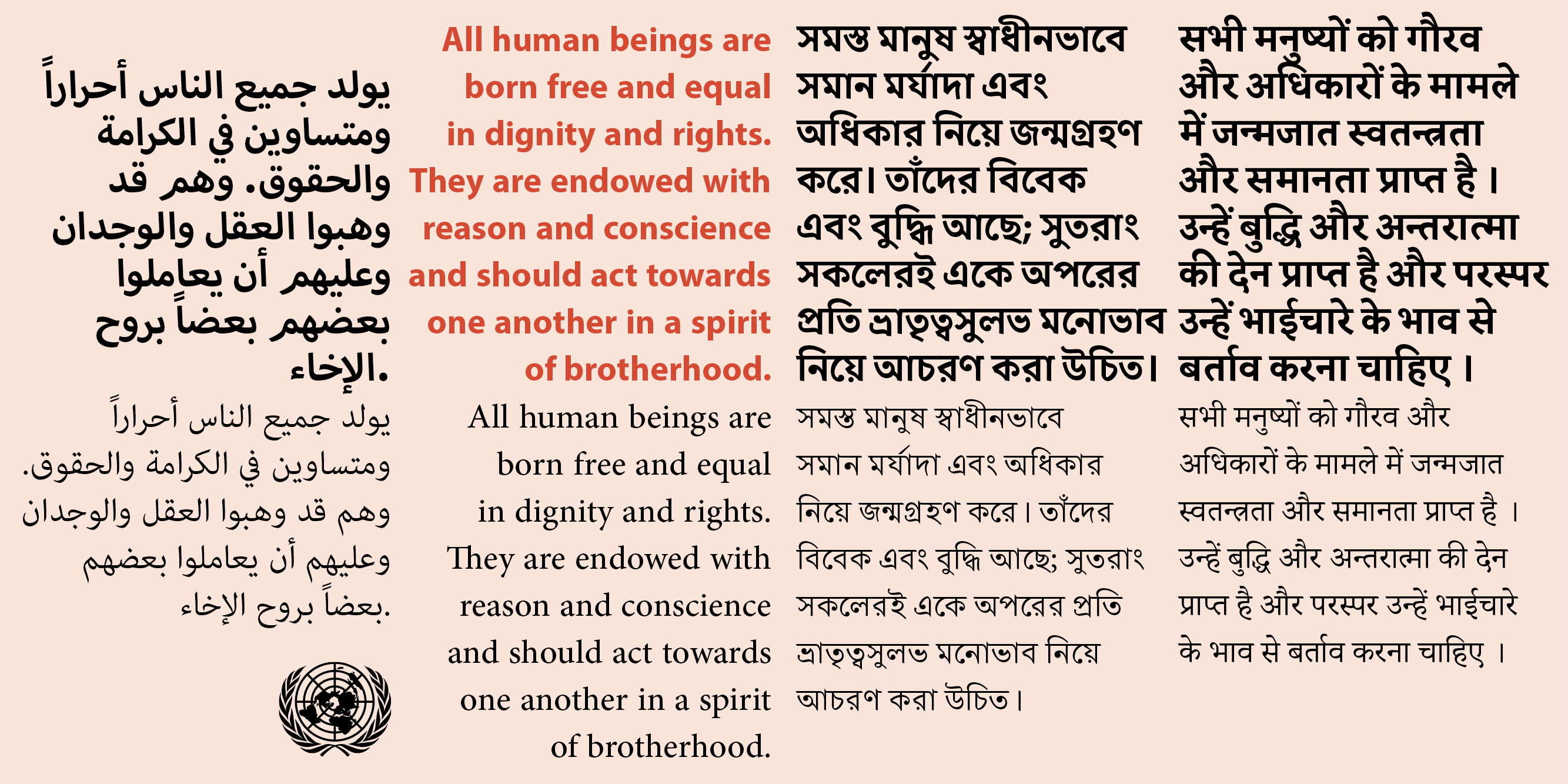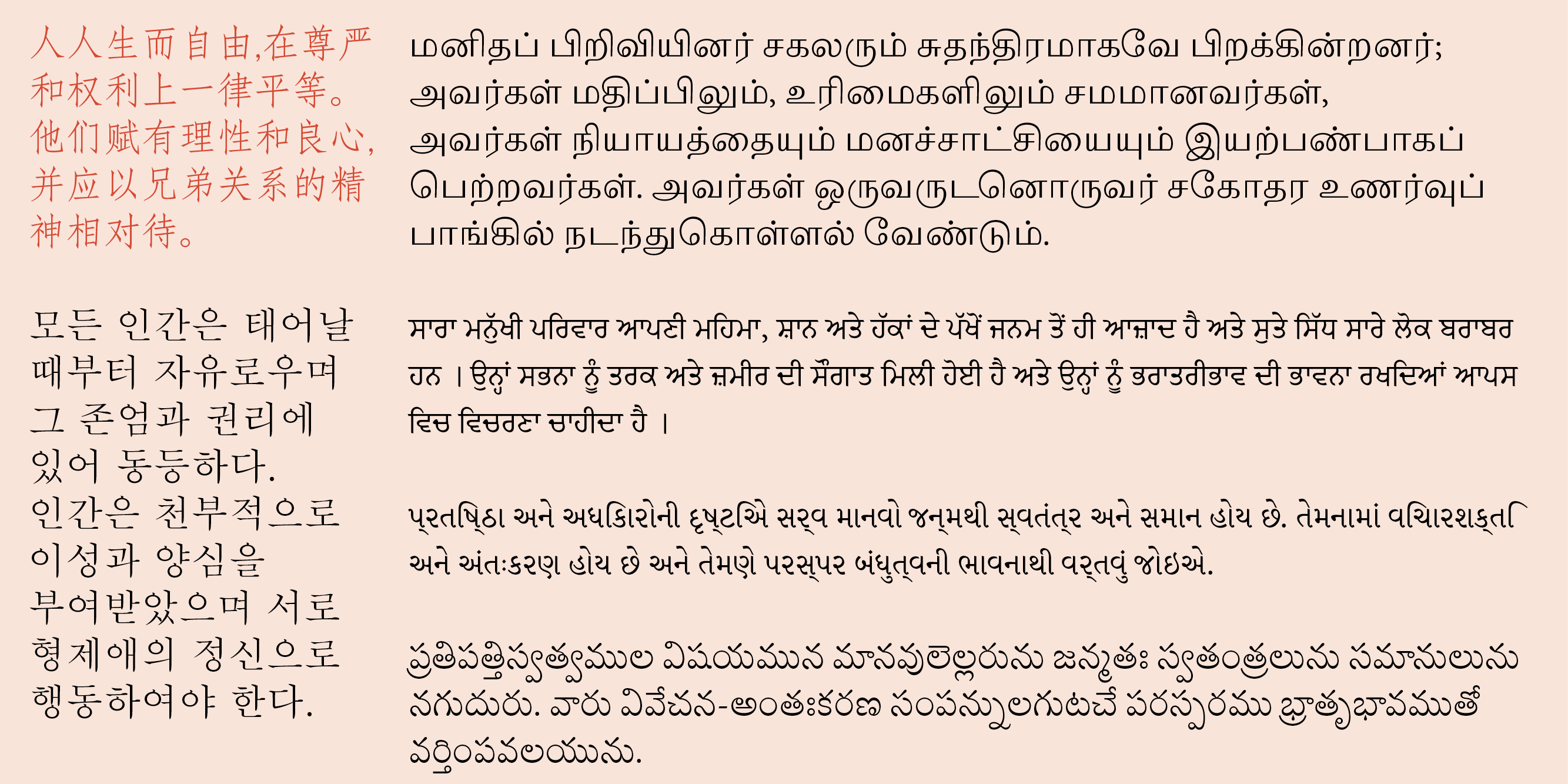Loading...
Please wait while we load the content.
Please wait while we load the content.


As the Adobe Originals collection has matured over the years, providing typographic support for more and more of the world’s languages has been one of its priorities. From its earliest days trying to collaborate with printer manufacturers in Japan, Adobe understood that it needed to think of font development beyond the languages using the Latin alphabet.
At first, this was a daunting technical challenge for the font software itself. The first generation of scalable digital fonts supported only 256 characters, some of which were punctuation and certain symbols. In order to support Japanese and other East Asian languages that used many thousands of characters, Adobe needed to develop techniques for handling multiple font files for each typeface, as well as methods for digitizing and developing such extensive designs. As it did during its early days of font development in the West, Adobe partnered with foundries in Asia to digitize and distribute PostScript fonts for Chinese, Korean, and Japanese languages, helping to establish the company’s activity in those regions.

Soon after forming those partnerships, Adobe started assembling its own group of type designers and engineers in Japan in 1992. Led by designer Masahiko Kozuka, this team concentrated on creating new typefaces using custom tools developed by Adobe. This type group in Japan has steadily explored the technical and aesthetic boundaries of Japanese digital type, starting with Kozuka Mincho in 1997 all the way through to Higumin, designer Ryoko Nishuzuka’s recent collaboration with Japanese illustrator Yuko Higuchi.
To learn more about Adobe Originals, subscribe to the Type Network Newsletter, where we’ll be sharing interviews, case studies and tutorials explaining everything designers should know about Adobe Originals and Adobe Fonts licensing.
The debut of the OpenType font format enabled much better support for languages requiring large character sets and complex text processing, and Adobe continued to showcase those possibilities with the Adobe Originals. Minion and Myriad were the first families to benefit. Each was expanded with new capabilities for Cyrillic and Greek, as were many other families that were designed in their wake. The new “Pro” model that showcased some of what OpenType could enable often included development of Latin, Cyrillic, and Greek designs, but still only addressed some of the needs of Adobe’s customers worldwide.
In 2002, Adobe commissioned new typefaces for Arabic, Hebrew, Thai, and later Devanagari from Tiro Typeworks, specialists in design and type development who helped the Adobe Originals team to establish methods for handling more complex writing systems. That first group from Tiro—and subsequent projects designed for Indic languages—were planned to complement Minion and Myriad, to make sure there was a broad range of linguistic support available for Adobe products, each able to harmonize with the others

These families—developed at Adobe and newly available from Type Network—make it possible for your work to reach a broader audience of speakers and readers around the world, using typefaces developed with the same commitment to design and precision as the rest of the Adobe Originals collection.